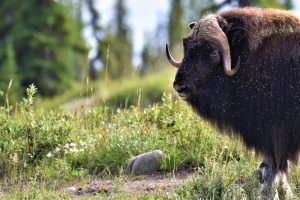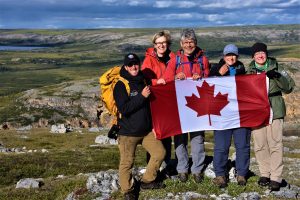
If I had been asked to write about home six years ago, I would have far exceeded the word requirement. Back in high school I thought I knew exactly who I was and where I came from. I had so much pride in my hometown that I did not miss a moment to let everyone I passed know that I was different. Identity is something that most teenagers try to find. Who am I? What are my likes? Dislikes? What are my quarks and personality traits that make me who I am? These questions dominate our minds at a young age. For me, being from a town called Wahnapitae made me special and different. I moved to Peterborough and needed an identity I told teenage self. Wahnapitae is a small town, “deep” in northern Ontario. This meant that I was a small town kid with a heart for the outdoors. I had to like country music, drive a four-wheeler and wear cowboy boots and jeans. The small town also meant that I was grittier hockey player. I grew up in old hockey arenas and coaches wanted me to hit and force my body along the boards.
That is what home meant to me.
As a twenty three year old, I could not be more different. Home is a concept that is much harder to define.
Wow, this course is very self reflective.
Well, let us take this moment to figure out what home is.
-It is the physical place that brings comfort?
-Is it the region where one is familiar?
-Is it an idea of the self within the surrounding?
-Is it family, friends and loved ones?
-Is it traveling?
-Is it finding challenge and pushing comfort zones?
Maybe home is all of these, one of these, or none.
Since I was ten years old, I have never lived in a place for more than two years. I have not even stayed in one spot for more than eight months at a time. I enjoy the comfort of finding a routine, but I also hate getting complacent. I always feel the need to move on from a place once it has become stale. Home has always been where family is, however I have spent the last ten years of my life living on my own.
The list that I compiled is mostly from my own experience. Everyones experiences home differently and from that perspective, I would like to think about why.
From the multicultural Canadian context, the idea of “home” is even more convoluted. This country had europeans colonize and wipe out huge populations of indigenous peoples who had called this place home for centuries. Contemporarily, refugees risk their lives and their homes for a new one in Canada. These concepts of home have literally meant life and death. Something that I am lucky enough to have never had to deal with. Having the land, wildlife and families taken away is awful. Wars have forced people from their homes. Children have been brought to residential school, taken from their families and stripped of their identity and language. These are traumas that cannot be undone.
Another student in this course wrote an introduction post that mentioned Gord Downie. It was something I hoped to touch on in future blog posts. The Tragically Hip are my favourite band of all time. When Gord was going through his diagnosis of terminal brain cancer, he did something special. Instead of taking his last years on earth doing something for himself, he sent a powerful message instead. It is important to note that Gord was really sick and the tumour affected his memory. Despite that, he wanted to spread the message of indigenous rights, residential school and understanding. He met with many Indigenous people to try to listen and understand. It was important to him that he raise awareness of the trauma that indigenous people are still living with to this day.
Perspective, is a powerful tool. This blog post has forced me to look inward at what home means to me. I have also put into perspective what others have gone, and are going through.
It is great that we are asking ourselves these questions, but it is more powerful when we read and understand each others differences. These blog posts are written from the heart which is why it seems we are getting great responses.
I hope this blog post does not seem too corny or forced, but it was truly an exercise in humility. I have worked my thoughts and ideas on to this page and it is quite evident because it jumps around a lot.
Thank you,
MM


